Descant shawms in general
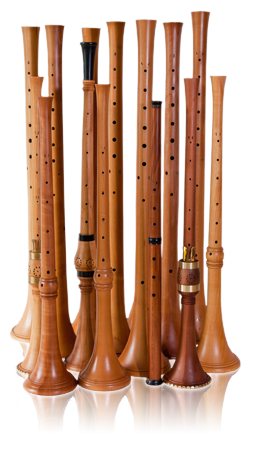 My first descant shawms were the resut of my work with the research team "Instruments of the Freiberg cathedral" of the Leipzig university. These were subsequently used in the concerts of "Musica Freybergensis" and on the CD’s "Wenn Engel musizieren/When angels make music" - Raumklang RK2404/5.
My first descant shawms were the resut of my work with the research team "Instruments of the Freiberg cathedral" of the Leipzig university. These were subsequently used in the concerts of "Musica Freybergensis" and on the CD’s "Wenn Engel musizieren/When angels make music" - Raumklang RK2404/5.
Following this, my next step was to make copies of instruments which are directly related to extant descant shawms such as those in Berlin and Leipzig. The Freiberg shawms are, as far as I know the first descants tuned in C. These mark the starting point of a new development, producing instruments which can be used in more complex musical settings because of their increased flexibility in sound quality and a wider range of accessible tonalities than that of the classical shawm of the 16th century. I followed this movement towards "modernisation" with copies of shawms, made by Richard Haka and Jakob Denner.
I have also managed to identify an instrument, which appears in the catalogue of the Germanisches Nationalmuseum Nürnberg as a straight cornetto, to be a 17th century double reed instrument (see below). Finally I continued John Hanchet's work making copies of all available 16th century descant shawms.
In dialogue with my customers I have developed some standard models.
Renaissance descant in d
The basis for this instrument is Vienna SAM 189. A copy plays at about a'= 465 Hz. With a longer staple, a larger reed and some slight modifications on the tuning holes the instrument works very well at a'= 440 Hz. If you intend to use one instrument in both pitches, you should have a copy and some extra reeds and staples.
in a'= 465, 460, 440 Hz
- sycamore, field maple
Renaissance descant in c
The lowest of the Brussels instruments scaled down to a'= 440 Hz. As an important feature, I use a rather light timber so as to make an instrument which is not heavier than the original (410g) and has a fulcrum, which will give you the feeling that the bell wants to rise. Please bear in mind that a 465 instrument is nearest to the original.
in a'= 465, 460, 440 Hz
- sycamore, field maple
Freiberg descant in c
Whereas the classical shawms of the 16th century were tuned in d, often leading to problems in achieving really well matched ensembles (as discussed by Michael Praetorius); there is a trend towards "modernisation" of double reed instruments starting ca. 1600. The first instrument I know which is not tuned to d and which is more flexible in sound, is the Freiberg type, built in 1593. These were made by a part time instrument maker and resemble instruments used at the Dresden court of the time. The originals may have been intended to have a d major scale with a leading note at the bottom, but slight modifications of the tuning holes make an instrument which plays in c with all chromatics used in the music of their time.
Copies of the Freiberg instruments play at a'= 465 Hz, scaling down to modern pitch works without any problems.
in a'= 465, 460, 440 Hz
- sycamore, field maple, white beam, service wood
Berlin descant in c
This instrument which is part of the Naumburg set represents a consequent further step in the developments mentioned above. The instrument which is dated by the museum as being from the beginning of the 17th century has a slightly narrower bore than the Freiberg instruments and a key for the bottom c.
in a'= 465, 460, 440 Hz
- sycamore, field maple, true service wood, brass ring, brass key
Leipzig 1301 descant shawm / Deutsche Schalmei in c
This instrument goes one step further in "modernisation", its construction principles are very similar to those of the Berlin instrument, but is more refined in sound.
in a'= 465, 460, 440, 415 Hz
- true service wood, plum wood (extra charge), brass ring, brass key
17th century Musette in c
In the Germanisches National Museum we find a very beautiful instrument labelled as a straight cornetto from the 17th century. A close look on the bore and hole positions tells us, that the instrument has to be a double reed instrument, most likely a French folk oboe. It plays easily over two octaves, with a slight preference for the higher one.
in a'= 440, 415 Hz
- plum wood, buffalo horn
Deutsche Schalmey Haka/Den Haag descant
A standard model of the Deutsche Schalmey from the 17th century with a barrel but no c key. The instrument plays over more than two octaves, preferably with a shawm reed but works with baroque oboe reeds too.
in a'= 440, 415 Hz
- white beam, boxwood (extra charge)
Medieval shawms
Sadly there are no existing medieval instruments that are available for us to copy. Using iconography and contempory treatises, it is possible to conclude that there were both soft instruments (douçaine ) and loud ones.We can also assume that the development of the medieval shawm was inspired by instruments with a narrow conical bore like the Phrygian aulos or instruments with a wide bore like the zourna.
I built my soprano instruments following the outside shape of:
- Memling (very narrow bore, oboe type reed)
- Virdung (medium conicity, standard soprano shawm reed)
- Zourna (European scale, standard soprano shawm reed or Gralla reed)
The alto and tenor instruments are based on Virdungs external design. The bores are narrower than those of Renaissance instruments.
For the prices of the instruments please consider the current price list.

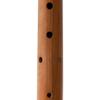
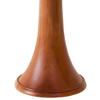
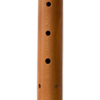
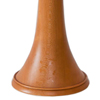
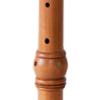
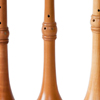
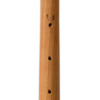
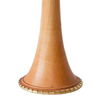
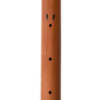
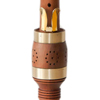
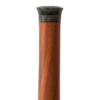
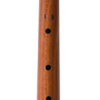
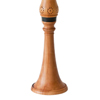
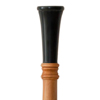

 Change language
Change language Deutsch
Deutsch Français
Français